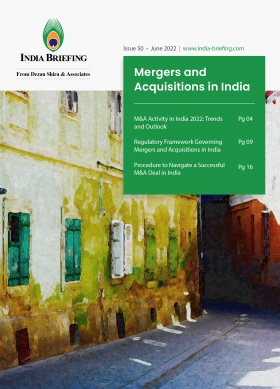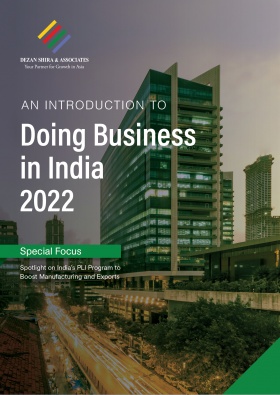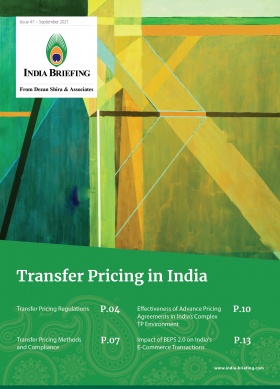What Does the Indian Premier League Cricket’s Staggering Growth Mean for Business?
The Indian Premier League Cricket (IPL) tournament has become one of the most watched sporting competitions in the world in its short 15-year history. In this article, we take a closer look at the growth of the IPL and what it means for the Indian economy and business.
The Indian Premier League, also officially known as TATA IPL for sponsorship reasons – in its latest season, is a professional men’s Twenty20 (T20) cricket league. The competition is contested by 10 teams based out of seven Indian cities and three Indian states. The league is relatively young and was founded by the Board of Control for Cricket in India in 2007.
Cricket, while relatively unknown in some parts of the world, is huge in India and is broadly popular elsewhere in countries that make up the British Commonwealth of Nations (erstwhile part of the British empire). The league attracts international players from around the world and is easily the most watched cricketing event globally, both in terms of live attendance and international viewers.
While sport itself is big business, the recent media discourse surrounding Disney’s loss of the IPL streaming rights has highlighted the growing importance of the competition for ancillary sectors. Media Partners Asia estimates Disney+ could lose as many as 20 million subscribers — nearly 15 percent of the company’s current138 million subscribers – after losing out on streaming rights.
Moreover, given the league’s global appeal, and vast domestic following, the IPL is both a considerable generator of economic activity within India, but provides indigenous business with a vehicle for growth.
The business of cricket
Cricket evolved from largely unknown origins to become an established sport in the 18th and 19th century in Great Britain. The game spread geographically along with the growth of the British colonies and eventually, the Commonwealth.
However, in the UK, and other parts of the world, cricket remains relatively uncommercialized. There have been developments, such as the launch of T20 cricket – a game that last at most 40 overs, instead of a test match which can last for days. T20 is largely considered to be more attractive to audiences – especially those who may not have time to follow a five-day test match – as it generally lasts several hours.
India is an outlier in that cricket, due to its huge domestic following, has developed into a successful commercial business. In fact, cricket has over a billion fans globally with the Indian subcontinent constituting more than 90 percent of them.
According to consultancy company Duff & Phelps, the brand value of the IPL in 2019 was US$5.9 billion. This means the league has become the second-most valuable sports league in the world, after the American National Football League (NFL).
The IPL has surpassed the English Premier League (EPL), Major League Baseball (MLB), and National Basketball Association league (NBA), all of which are long established and generate vast quantities of money.
The IPL’s development
Lalit Modi, the founder and first chairman of the IPL, said that the league had been designed to entice an entire new generation of sports fans into grounds throughout the country. The dynamic T20 format has been designed to attract a young fan base, which also includes women and children, Modi said.
When the IPL began in 2008, some of India and Bollywood’s biggest names spent a total of US$723.59 million to buy eight city-based franchises. Some 15 years later, the IPL brand has grown exponentially in popularity and commercial value. This is exemplified by CVC Capital’s – a British equity firm – purchase of Gujarat Titans for US$740 million in 2021.
With public and commercial interest in the league continuing to increase, the total revenues from the central pool in the upcoming five-year cycle may touch US$7.6 billion. The league has expanded considerably. While salaries do not match those paid in the top footballing leagues, India captain, Virat Kohli earns a reported £1,666,000.
What the IPL means for the Indian economy?
According to a KPMG survey report, the 60-day tournament contributed INR 11.5 billion (US$182 million) to the Indian economy in 2021, while a report submitted by the UN General Assembly for Peace and Development highlighted an economic value of US$3.2 billion. The league generates value for the Indian economy in several ways.
Firstly, the IPL creates employment opportunities for thousands of Indians. This includes high-paying sports-related professions, such as physiotherapy and coaching staff, to stadia-related employment, such as stewarding. In turn, the need to connect employers with jobseekers creates ancillary work for companies in the recruitment space.
Reports also suggest that the market for sports equipment and gadgets has also witnessed considerable growth as a result of the IPL’s growth, with market size increasing to INR 40 billion (US$500 million).
Brokerage firm Anand Rathi Investment Banking is among those that see huge growth potential in the Indian sporting industry. While the firm sees growth opportunities across the industry, it highlights India’s role as one of the largest manufacturers of sports goods and equipment. The Anand Rathi Investment Banking contends that India’s sporting industry will be worth US$100 billion by 2027, with the IPL leading that growth.
With billions of dollars flowing through the league, there has also been an improvement in sporting infrastructure, notably stadia. Last summer, the UAE emirate Sharjah, which hosts a handful of IPL games, became the latest host to upgrade its facilities ahead of the new season.
Meanwhile, the competition also serves to enhance tourism in India. India was the 23rd most visited nation by foreign tourists in 2019, welcoming 17.9 million people.
UK-based travel company, Cox & Kings, said that there was a 30 percent surge in travel booking during the 2019 IPL season as cricket fans flooded to India for the competition. The league also generates domestic tourism as fans travel from one city to another.
In a similar vein, the league raises the international profile of India and its cities. With a sizeable international TV audience and thousands of foreign visitors, the competition provides the country and its regions with the opportunity to showcase all they have to offer.
In turn, the international and domestic audiences make the league very attractive for sponsorship. It’s not just TV audiences either; 104,859 fans attended the 2022 IPL final at the Narendra Modi Stadium – the world’s largest cricket ground. As a result, the league has garnered sponsorship from various companies around the world, including Coca-Cola, Maruti Suzuki, PhonePe, and MRF.
The success of the league has only served to enhance competition for broadcasting and streaming rights. Reliance Industries Limited – owned by Asia’s richest man, Mukesh Ambani – recently paid a hefty premium (US$3.04 billion) to acquire the digital rights for the IPL for its subsidiary Viacom18. Disney-owned Star Sports India paid US$3.02 billion for the exclusive TV rights.
Reports suggest that Ambani sees the IPL deal as a way to propel his streaming service to compete with other major players like Disney+ Hotstar. The Bank of America has highlighted that the ‘Cricket + Bollywood’ approach could help the platform improve its offering and expand its audience.
About Us
India Briefing is produced by Dezan Shira & Associates. The firm assists foreign investors throughout Asia from offices across the world, including in Delhi and Mumbai. Readers may write to india@dezshira.com for more support on doing business in in India.
We also maintain offices or have alliance partners assisting foreign investors in Indonesia, Singapore, Vietnam, Philippines, Malaysia, Thailand, Italy, Germany, and the United States, in addition to practices in Bangladesh and Russia.
- Previous Article New CSR Rules Limit Disclosure of Key Details in Company Annual Report
- Next Article Import-Export in India 2022: tendenze e procedure chiave








